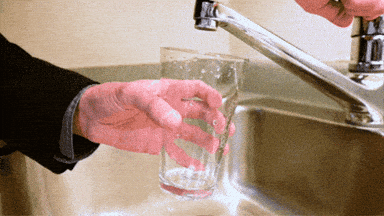- The Daily Tonic
- Posts
- Better late than never—EPA finally tackles drinking water.
Better late than never—EPA finally tackles drinking water.
Plus: Is acetaminophen delaying your baby’s first words?
Monday. Is breakfast really the most important meal of the day?
Well, it depends. Research suggests (READ THE STUDY) that adding protein to your breakfast can trigger a domino effect, helping control appetite and improve food choices throughout the day—a definite win-win. So, while a muffin alone might not cut it, starting your day with a well-balanced meal certainly seems like a smart move.
Speaking of smart moves, the EPA is finally setting limits on ‘forever chemicals’ in our drinking water. Better late than never, I guess. Let’s dive in.
Today’s Menu 🌿
The EPA makes moves toward safer drinking water.
Is acetaminophen delaying your baby’s first words?
FIVE blood sugar-spiking foods to avoid.
The Daily Recipe is a delicious Greek dish you’ll love.
What are carbon beads?
Read Time: 4 minutes

Better Late Than Never
The Environmental Protection Agency (EPA) has finally introduced drinking water standards for a group of chemicals known as "forever chemicals.” This new regulation, a significant move by the current administration, aims to reduce pollution from per- and polyfluoroalkyl substances (PFAS), which can linger in the environment for centuries.
Recognized for their health risks even at minimal exposure levels, PFAS have been linked to several serious health issues, including various types of cancer, low birth weights, high cholesterol, and negative impacts on the liver, thyroid, and immune system (READ MORE ABOUT PFAS HERE).
The EPA's decision marks the first time since 1996 that a drinking water standard has been set for a new contaminant. Officials estimate the new rule will lower PFAS exposure in drinking water for about 100 million Americans. Even though states like Maine, Massachusetts, New Jersey, and Washington have already set drinking water standards for some PFAS, the federal rule will finally provide a uniform standard across the country.
Sounds like a no-brainer to me.
The story of how these regulations came to be involves decades of advocacy and legal battles. Notably, Robert Bilott, an environmental attorney from Cincinnati, led the charge against major companies like DuPont and 3M, resulting in significant class-action settlements. His efforts have been instrumental in bringing about these much-needed regulations. If you are looking for a good movie recommendation, “Dark Waters” is based on his story (SEE THE MOVIE HERE).
Bilott describes PFAS as "the most toxic, persistent, and bioaccumulative chemicals ever found in our nation’s drinking water supply."
Under the new standards, water utilities will need to test for and reduce levels of the most concerning forms of PFAS—PFOA and PFOS—to less than 4 parts per trillion, the lowest level that current technology can feasibly measure. This regulation also sets limits for other individual PFAS chemicals and their mixtures.
Despite this progress, there are still challenges ahead. Nearly every American has measurable amounts of PFAS in their blood, and almost half of the nation’s tap water contains these chemicals. There is already widespread contamination, which highlights the urgency and significance of the EPA's new rule.
However, implementing these standards will not be without cost. The EPA estimates that meeting the new drinking water standard will cost water utilities about $1.5 billion annually. Yet, the health benefits—reducing the incidence of diseases like cancer and heart conditions—are expected to outweigh these costs. The current administration has also allocated substantial funds through the bipartisan infrastructure package to support water systems in reducing PFAS and improving overall drinking water infrastructure.
Critics from the water industry argue that the financial burden of cleaning up PFAS contamination will fall disproportionately on consumers. They emphasize that water utilities do not produce PFAS chemicals but are tasked with the cleanup. This point underscores how sticky environmental regulation can get. Should it be the responsibility of water utilities to clean up pollution they didn’t originally cause? It’s a complicated question.
In response to industry concerns, environmental groups are advocating for stronger actions to prevent PFAS pollution at the source. They suggest that protecting water sources is the most effective strategy to prevent contamination.
The key takeaway? All Amercians should have access to clean, safe drinking water. As the EPA moves forward with these rules, set to take full effect by 2029, the hope is that these efforts will get us closer to that end goal. Will it be enough? Only time will tell, but at least it’s something.
Related Articles
Psst… You can reply with recommendations too!
The Daily Recipe
Try to guess… Greek flavors are the best. This recipe has it all—protein, flavor, carbs for energy. It is a must-try!
Curious? Click below to discover the recipe and see if you guessed right.
Would you try it? |
Tonic Shots
🍕 Pizza Snacks Can’t Be Healthy. Or Can They?
This is a must-have for the freezer. All the good of pizza, without any of the sketchy ingredients. GET SNOW DAYS!
💚 What Are Carbon Beads?
Apparently they can help restore healthy gut microbiome and reduce liver disease progression. READ MORE.
🥩 An Easy Bonus Recipe For The Crock Pot.
An easy way to prep some protein and have plenty of leftovers. Enjoy! GET RECIPE
“Alone we can do so little; together we can do so much.”
How was the newsletter? |
